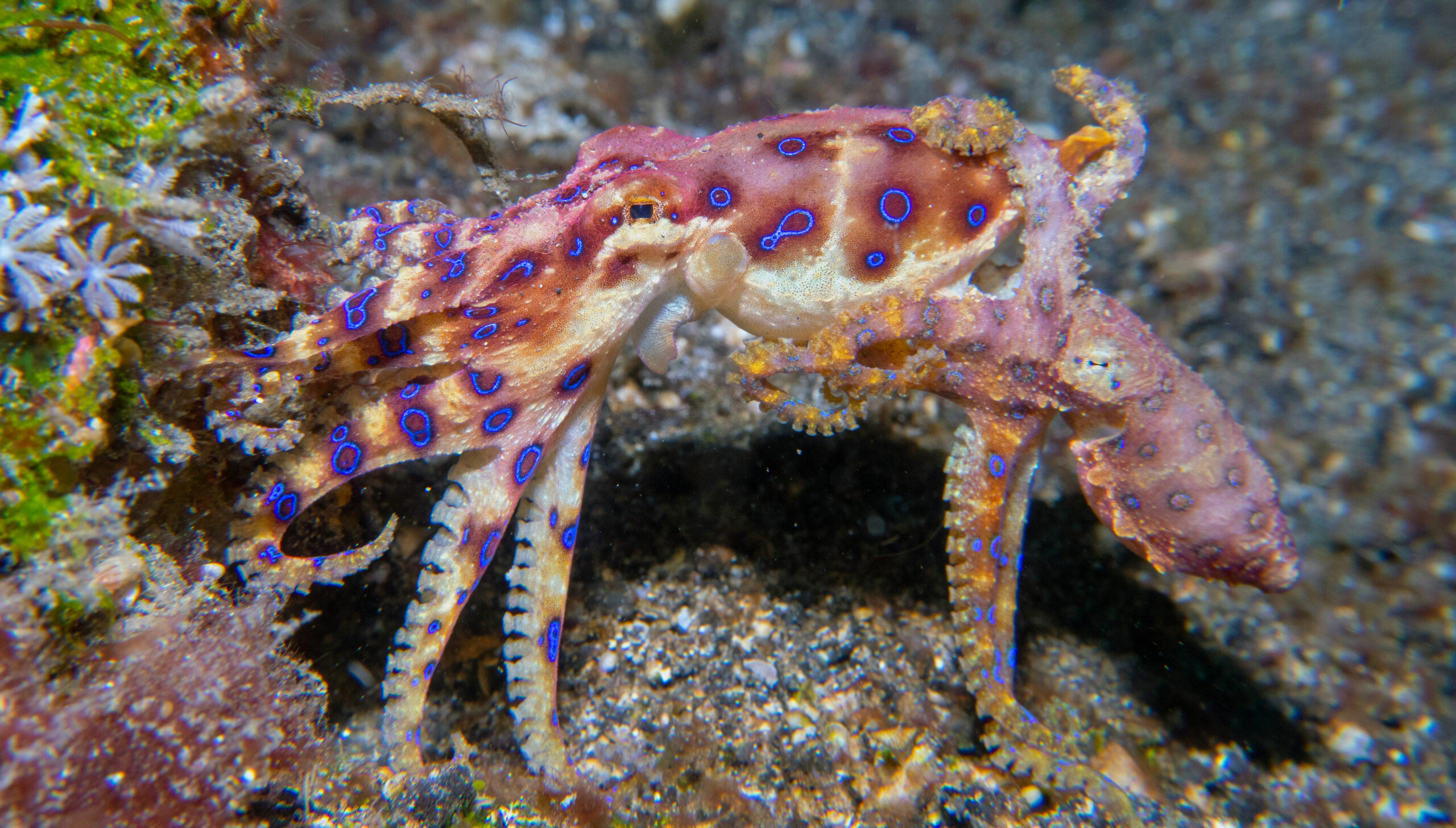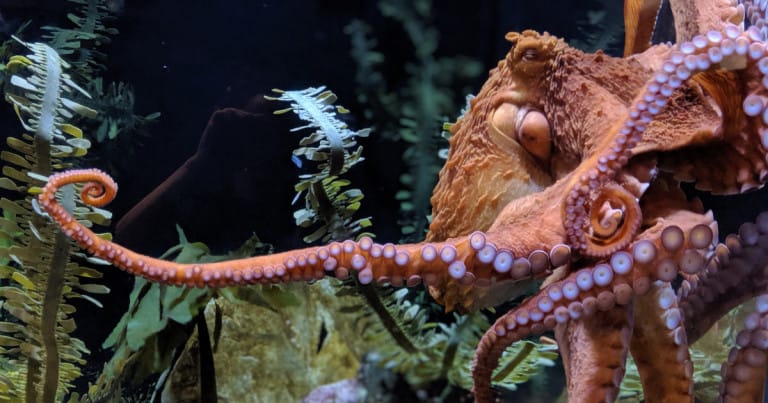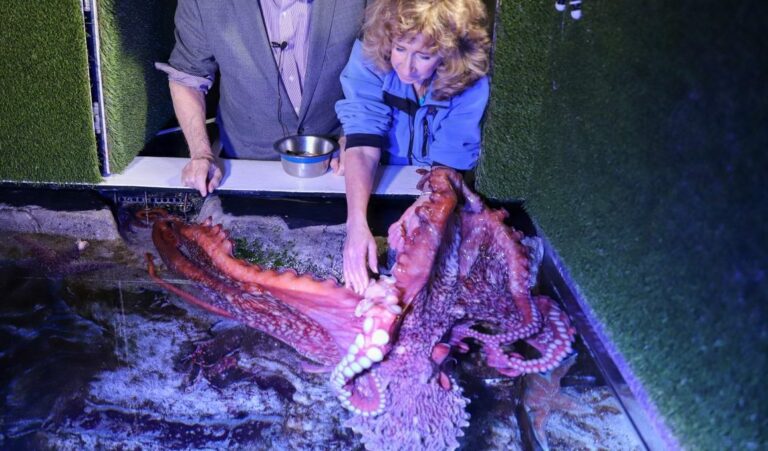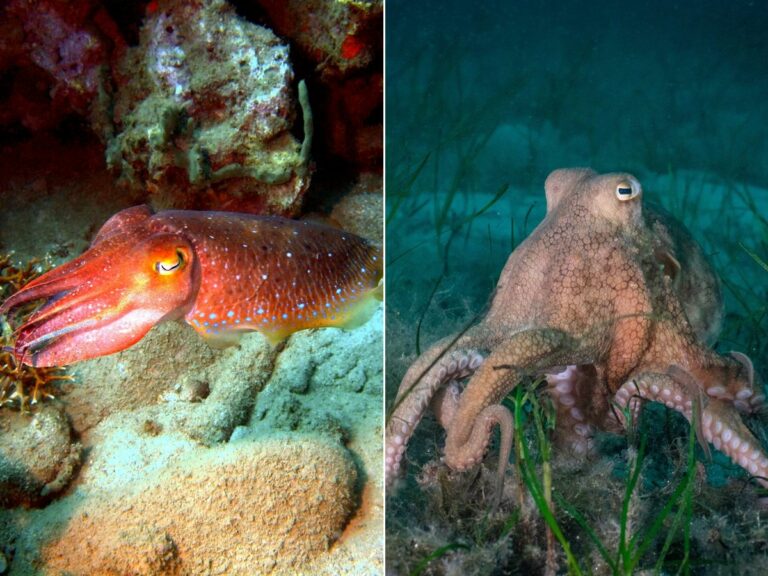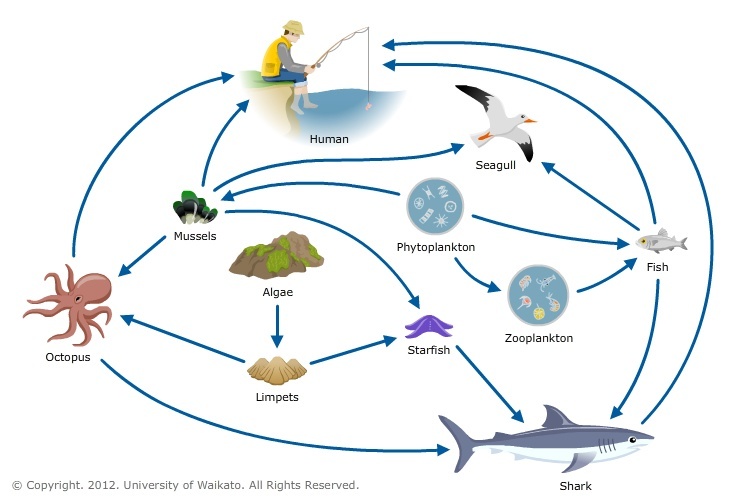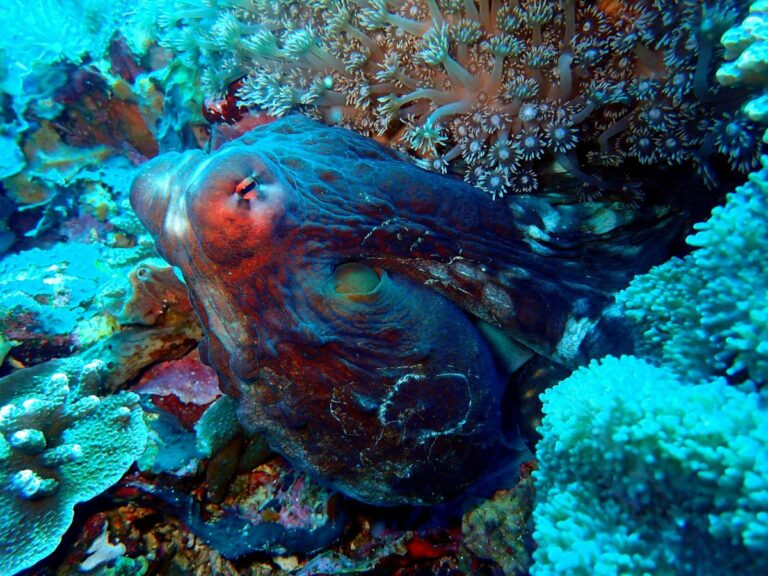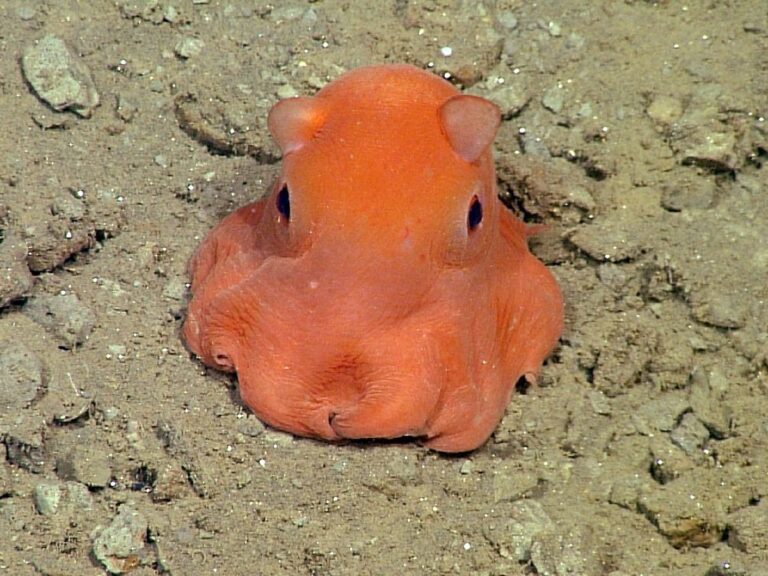How Do Octopus Mate?
Ever wonder how do octopus mate but have always been afraid to ask? Well, wonder no longer because OctoNation is here with your “birds and the bees” talk, cephalopod-style! We are here to give you all the juicy details on how octopuses get down, funky mating rituals, detachable arms, what happens after the deed is done, and so much more!
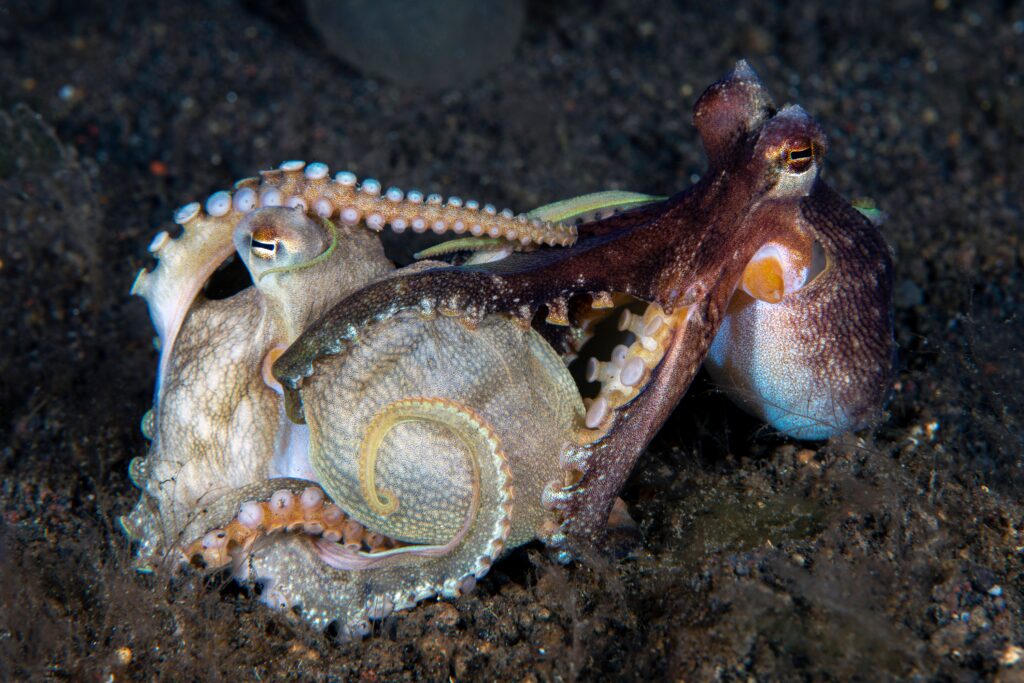
Male and female octopuses look very similar with their bulbous heads and 8 arms. They both have reproductive organs located in their mantle; however, one small external difference has everything to do with sex.
Ever heard of an octopus’s “sex” arm?
Males have one arm which is modified at the end and called the hectocotylus. That’s a very fancy word that directly translates into a sex arm.
An octopus hectocotylus is made up of 3 main components:
- Ligula
- Calamus
- Spermatophore groove
What is a spermatophore groove?
The spermatophore groove is a curved groove along the length of the arm which holds rows of sperm called a spermatophore.
At the base of this groove is a triangular-shaped process called the calamus and the other end is the ligula, a spoon-shaped tip that becomes stiff and enlarged when males reach into the female’s mantle to transfer their sperm packet.
🐙 Octopus Fun Fact
A male’s hectocotylus arm is shorter than the others (and of course the most important of all the arms) so they usually protect it, keeping it curled up to avoid drawing attention to it.
Also, the hectocotylus doesn’t have chromatophores present like the rest of the body so this appendage is bright white.
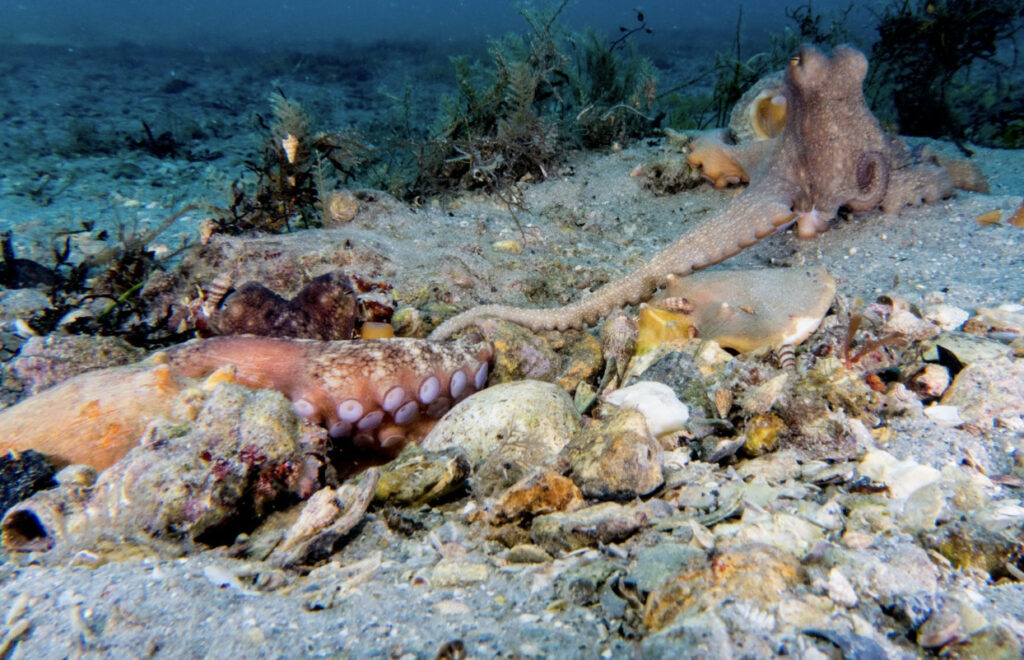
Is it really that simple for octopuses to mate?
So all male octopuses have to do is transfer their spermatophores to the female and they have successfully mated, right? In true weird and wonderful octopus fashion, it’s rarely that simple!
While octopuses prefer a solitary lifestyle, males are generally the ones to seek out a female when they reach sexual maturity. Males must proceed with caution and be tactical in their approach because some female octopuses have cannibalistic tendencies.
I suppose you can’t really blame the female for wanting a protein-rich meal knowing she has thousands of babies to take care of soon!
Males have tricks of their own to avoid becoming a post-sex snack!
When approaching a female, they:
- Make themselves look bigger
- Rear up to display large suckers close to their beaks
- Flash distinct color patterns across their bodies to signal their intentions
When it’s mating time, the male will stand in an arched posture and use a pumping action to maneuver their spermatophore down their arm till it lands safely in their hectocotylus.
Their sperm packets get a fun slip-and-slide ride down their arm about every 15 minutes during an hour-long mating period! Then, a male will mount a female’s mantle in the hopes of making a quick getaway in case she changes her mind while he’s making his sperm deposit.
How long does octopus mating last?
Mating can take minutes for smaller species and upwards of 4 hours for larger species like the Giant Pacific Octopus!
🐙 Octopus Fun Fact
Spermatophores of E. dofleini may be 1 m long and contain billions of sperm!
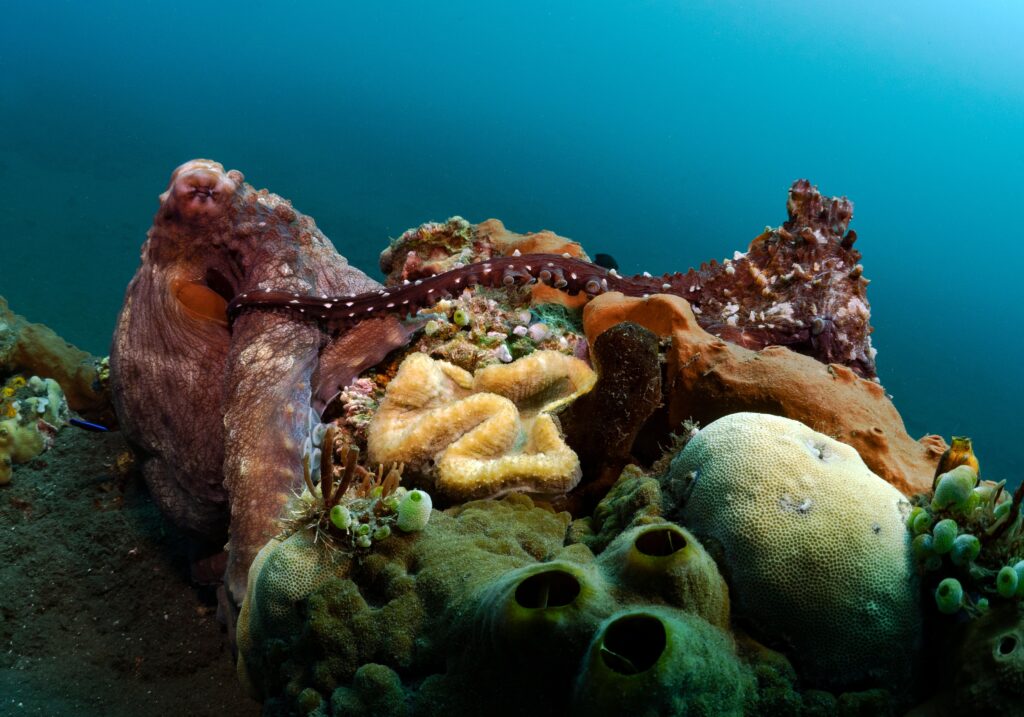
How careful does the male octopus have to be?
There is a real danger if the female gets HANGRY during the process! Some males even go so far as to hide out in a nearby den and only sneak their hectocotylus arm out and into the female’s den to deliver their spermatophore.
🐙 Octopus Fun Fact
The larger Pacific Striped Octopus is the first to be observed mating face to face, arms tangled up in a lover’s embrace. Not only that, they love a good snuggle session with males and females observed sharing a den!
But wait! There are more mating shenanigans!
Species, such as the Algae Octopus (Abdopus aculeatushas), have males standing guard outside the female’s den after mating. This is known as mate guarding and helps ensure that the females will use that male’s sperm for fertilization.
However, the smaller males are not to be underestimated! They will trick these larger males standing guard by flashing female color patterns effectively sneaking past to mate with the female.
🐙 Octopus Fun Fact
A recent study on blue-ringed octopus sex found that females will lay eggs that were fertilized by multiple males in one clutch! Females have the ability to store spermatophores and use a mix of sperm when they are ready to lay their eggs.
The handy dandy detachable hectocotylus
A male depositing his spermatophore into the female’s mantle via his hectocotylus is run-of-the-mill octopus sex, but it wouldn’t be the octopus world without some fun exceptions.
Specifically, the one where some male octopus species have the ability to break off their hectocotylus!
This allows the female to gather as many as she would like and keep them ‘til she’s ready to fertilize her eggs. This comes in handy for deep-sea species such as the Blanket Octopus, Argonaut, and Dumbo Octopus who:
- A. might not come across a mate for a long time
- B. can wait till conditions are favorable for egg-laying
My personal favorite is the Argonaut who loads their hectocotylus arm with spermatophores, detaches it, and then SWIMS right over to the female! Contact-less mating but the genetic material has been received.
They have achieved what no one thought possible: socially distanced sex resulting in babies!
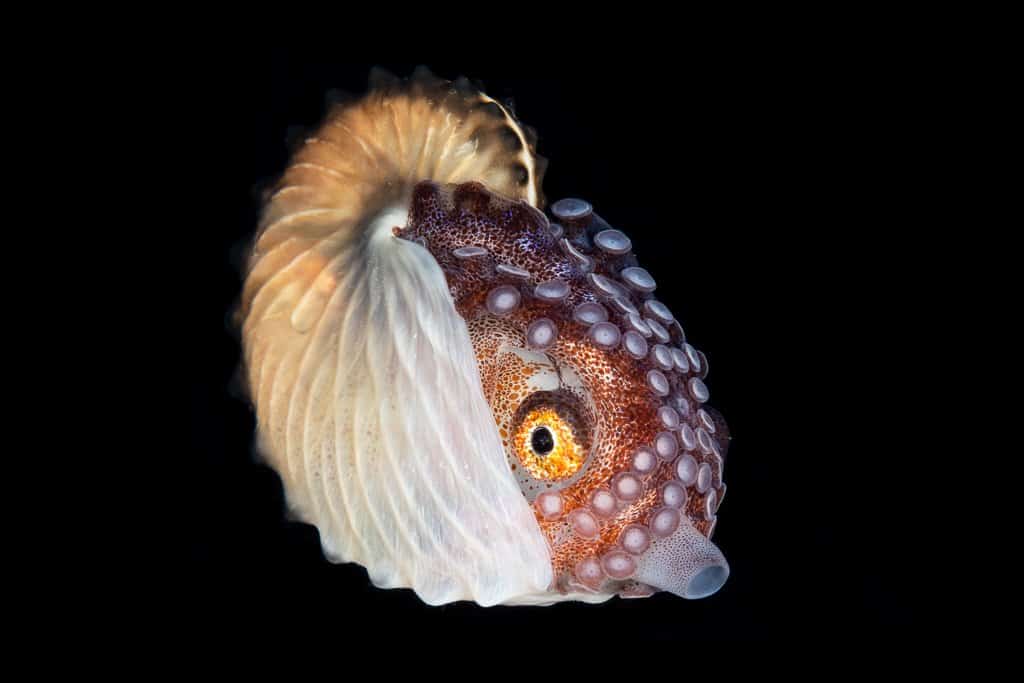
After all the fun and games, mating is an octopus’s ultimate demise…
Octopuses have a lifespan lasting 6 months to 5 years depending on the species.
Like many animals, the most important part of an octopus’s life is arguably sex! That exciting moment where the promise of passing along their genetic material is realized.
Octopuses are semelparous which means that once they have mated, they die. This process is called senescence. Females have the additional step of laying eggs and caring for them, but they eventually meet the same fate as their male companions.
🐙 Octopus Fun Fact
To learn more about how octopus mamas give birth and how many babies they have, head over to this blog post to learn more about octo-moms!
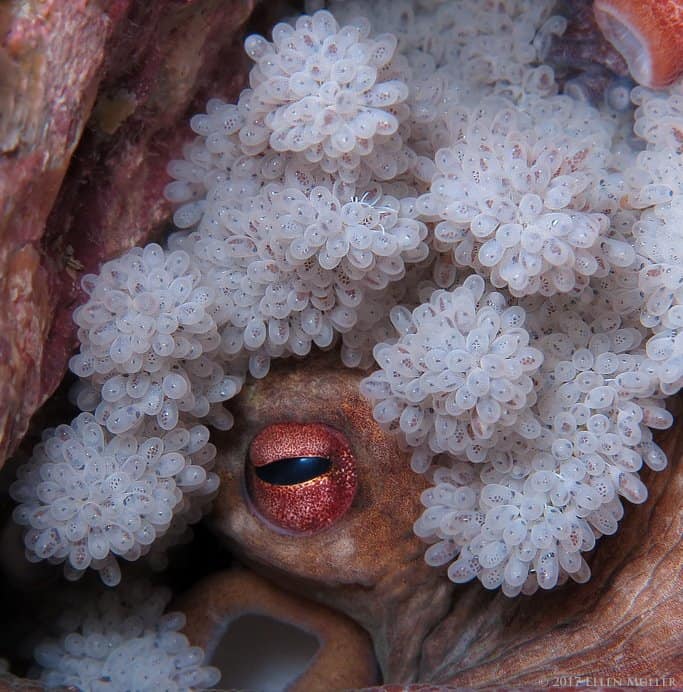
What makes them stop eating after mating or their eggs hatched?
A small organ called the optic gland, which is located between their eyes, seems to control a lot of the process. The optic gland is similar to our pituitary gland, which tells other glands which hormones to release and helps:
- Regulate growth
- Blood pressure
- Reproduction
A chemical secretion from the female and male octopus’s optic gland stops their desire to eat during the reproductive process leading to their ultimate demise.
Octopuses are sadly pre-programmed to die.
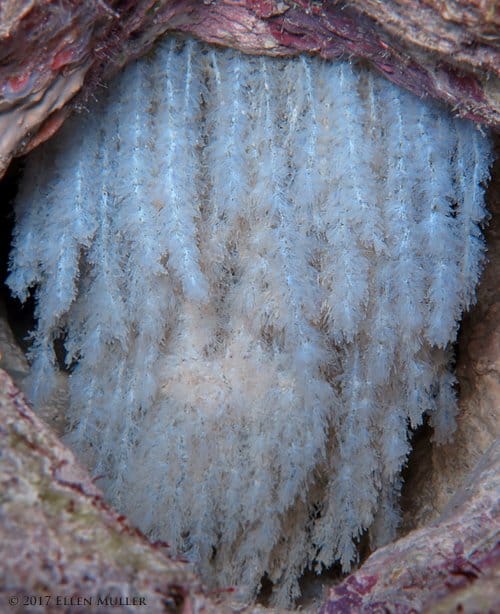
What if the male octopus never ends up finding a mate?
Wouldn’t that mean the optic glad never kicks into action? Indeed!
A key study from 1977, where scientists removed the optic gland after a female had laid her eggs discovered that she ends up abandoning her eggs, resumes feeding and does extend her lifespan (as much as double in a controlled setting).
It’s hard to know how long they could live in the wild since many factors such as predation and higher water temperatures can reduce an octopus’s life expectancy.
Unfortunately, mating or not, octopuses will never be long for this world with scientists hypothesizing the reason they self-destruct after mating is to control the population.

So, how do octopus mate? Now you know!
There you have it! The sex lives of octopuses are as convoluted and interesting as their many other incredible adaptations and behaviors. If you want to learn more about how they give birth and lay their eggs, read our article on how octopus give birth!
If you want to educate yourself some more about all sorts of different cephalopods, take a look at our encyclopedia. Or, what we call it, our Octopedia!
Connect with other octopus lovers via the OctoNation Facebook group, OctopusFanClub.com! Make sure to follow us on Facebook and Instagram to keep up to date with the conservation, education, and ongoing research of cephalopods.
More Posts To Read:
- Do Octopus Bite?
- Does Octlantis Exist?
- “How The Octopus Lost Its Shell” (Octopus Comic)
- What’s The Difference Between Cuttlefish vs. Octopus?
- Breaking News – There are now THREE new species of Nautilus!
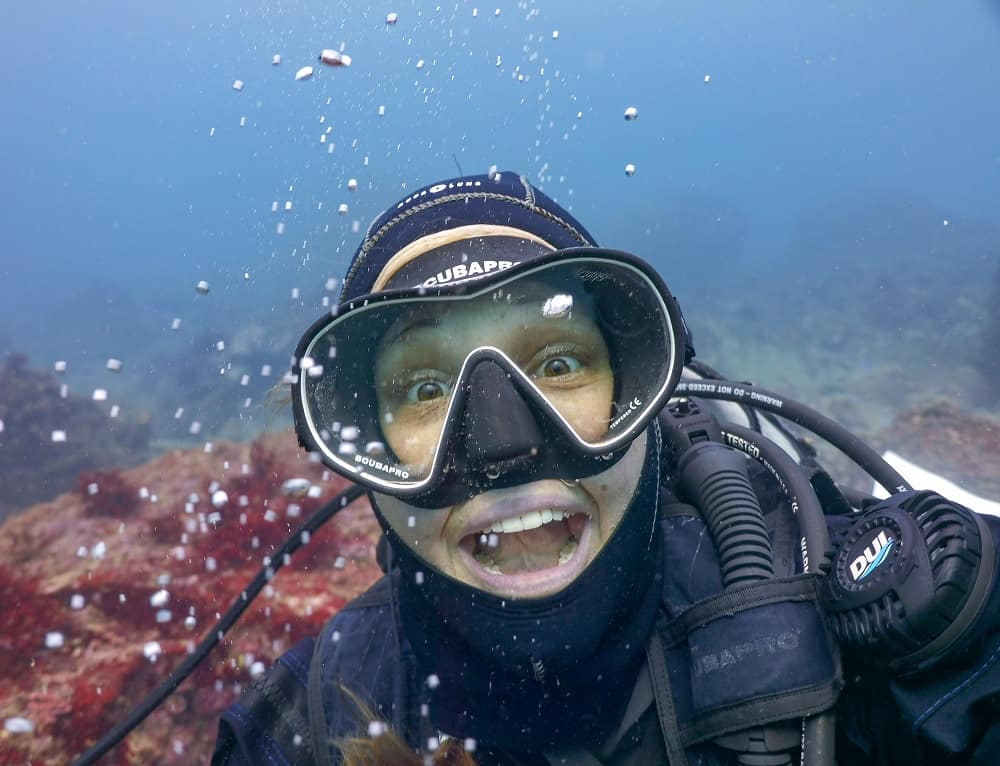
Corinne is a biologist with 10 years of experience in the fields of marine and wildlife biology. She has a Master’s degree in marine science from the University of Auckland and throughout her career has worked on multiple international marine conservation projects as an environmental consultant. She is an avid scuba diver, underwater photographer, and loves to share random facts about sea creatures with anyone who will listen. Based in Japan, Corinne currently works in medical research and scientific freelance writing!
